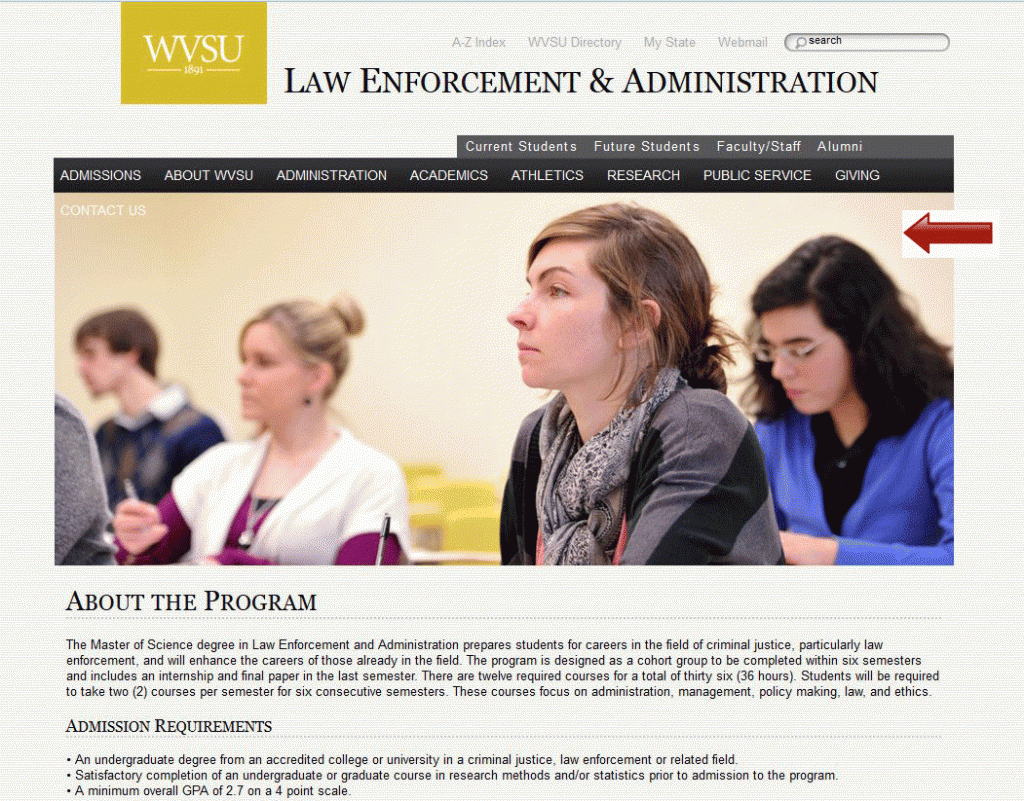| Apr 3, 2013
Enrollment Marketing: Three things that you would never do with your print collateral (but that happen every day on your website.)
Every day I visit the websites of potential clients who are looking for help with enrollment problems. We all know that the website is your best recruiting tool. It’s an essential part of your institution’s enrollment strategy, for attracting and the recruiting of prospective students. In almost every case, I’m amazed to find problems that most schools would never allow with the coveted print collateral. So I wonder: what makes it ok on your website?
Have a look at some of these examples. (And sorry, WVSU, but you are a great example of what not to do. Call me! We’ll talk it over.)
1. Mislabeling or not labeling page or section titles
Come on ….Would you ever let this happen to your view book? Page titles are one of the most powerful on-site search engine ranking factors and a guide to students that are navigating your website. A common mistake is having duplicate page titles. This makes it difficult for students—and search engines—to determine which page is which.
2. Poor use of photography
Wow. This institution is using a single image for all of the program pages. Could you image a series of program brochures with the same image on the cover? I don’t think so! If you have the budget, hire a professional photographer. If you don’t have the budget, find one. You must have a collection of photos that relate specifically to your school and have subject matter that your audience can identify with. Most people don’t read all the text on websites so the photos you choose really matter. You want to use photos to reinforce your message, not to simply decorate your page.
3. Not enforcing basic roles and responsibilities
Call to action is at the bottom of the page. Really? As important as a website is, many institutions struggle to maintain website quality, consistency, and timeliness. Website maintenance and the use of best practices need to be enforced to guarantee the operational integrity of a site.
Most of these problems are content related. Content is still king and is the core building block of any website. Your institution’s website is also now the heart of your brand and the bridge to your community. Content management systems are put in place to combat this but most schools don’t enforce basic roles and responsibilities. As the number of content providers on your website increases, be sure to set standards about how the site will be set up and maintained. Don’t let these problems happen to you!


